How to properly cover clematis for the winter
With the end of the summer season, the moment comes for the shelter of heat-loving plants. Clematis are no exception to the general list. It is extremely necessary to "conjure" over them, since the vine (this is how the name of the flower is translated from Greek) comes from southern Europe and can hardly endure the harsh climate, and warming flowers for the winter helps them withstand adverse conditions. Our article is devoted to what to do before the shelter, when and how to properly cover and take it off in time.
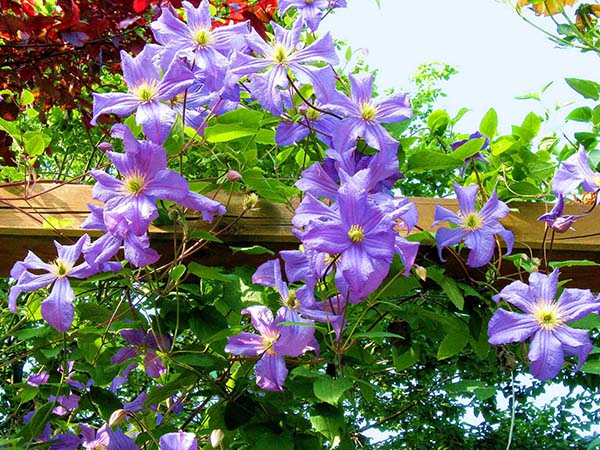
Content
Preparing clematis for winter: what needs to be done before shelter
- Carry out autumn pruning of clematis, depending on their belonging to a particular group.
By the way! The site has a detailed article about how to properly prune clematis in autumn and spring.
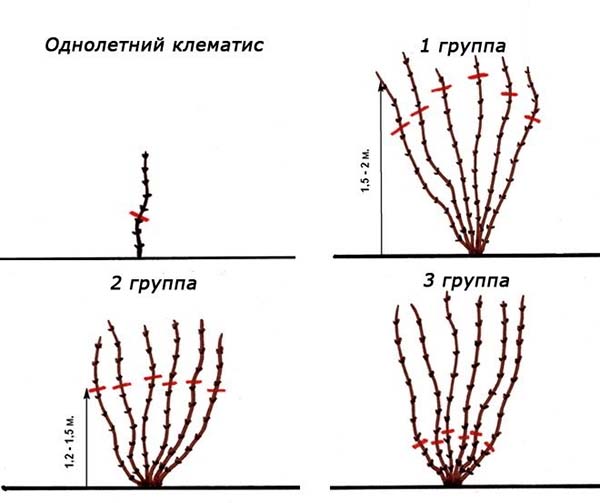
- Treat against fungal diseases (for example, spilling with Fundazole solution).
- Lay on the ground and, in fact, cover for the winter (again, depending on which group it belongs to).
Video: preparing clematis for winter - pruning and shelter
Clematis trimming groups
Cletimas are divided into 3 large groups according to the method of shelter and trimming:
- 1st group - it includes those clematis that are practically not cut for the winter (preferably still in the spring), because they bloom on the lignified shoots of the previous year. At the same time, you need to cover them well enough, and this is not easy, because almost the entire above-ground mass must be preserved. However, this is much easier than covering the same roses, because there is practically no need to force clematis, it must be untied from the support and it will lie down.
Interesting! Clematis of the first group are sometimes even referred to as "princes" (the closest relatives of clematis).
- 2nd group - it includes those varieties of clematis that grow on the shoots of the past and current years. For the winter, such clematis must also be covered carefully. They are usually cut off in 2 stages - in the summer the part that bloomed, and in the fall, the shoots that have formed during the current year are shortened by 1/3 or even 1/2. In the spring, they do sanitary pruning.
- Group 3 - these are the varieties of plants that bloom on the shoots of only the current year, which means that they actually do not need shelter for the winter. Autumn pruning is carried out almost under the base, only 2-4 lower nodes are left.
Actual question! How to determine the variety if you do not know which one is growing in your summer cottage.
You just need to conduct an experiment: in the fall, cut off all the shoots by 1-1.5 meters, put them on the ground and cover them with something. And next year, you will need to carefully monitor how the buds will awaken, on which shoots they will bloom (or not).
- If buds are preserved on the stemsand then of them shoots went and bloomed - this second group.
- If kidneys are not preserved - this third group... Their flowers are formed on new shoots that grow almost from the very root.
Video: pruning and covering clematis for the winter
When to cover clematis for the winter: optimal timing
The time to shelter clematis for the winter comes with the onset of subzero temperatures: 0 ... -2 degrees. Moreover, it is advisable to do this after the leaves have dried up (and this will happen precisely after the first frosts), because it is not very rational to cut and cover the leaves when green, they can still feed the plant.
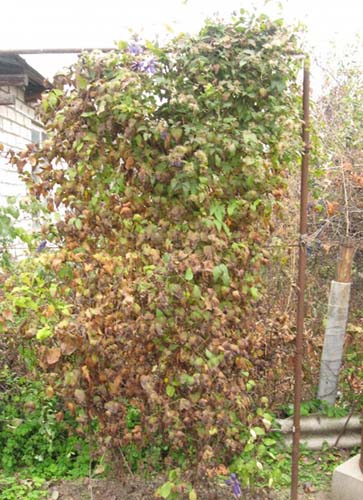
Advice! If frosts do not come, then you can do preparatory work: remove from the support, tie, tilt and pin, prepare (buy) a shelter. And as soon as the cold weather sets in, you just have to cover directly.
If it is very humid, then you should wait until the rains end, the plant dries up, and then cover it.
Thus, the approximate timing of the shelter of clematis in the middle lane (Moscow region) is the second half of October, similarly in the Leningrad region. They are insulated 1-2 weeks earlier in Siberia and the Urals. But in warm southern regions, the procedure usually begins in the second half of November.
When to take cover
It is necessary not only to cover clematis in time, but also to open the shelter in a timely manner. As a rule, this is done with the onset of positive temperatures (when the snow has completely melted), that is, somewhere in the middle of spring (in April). Moreover, the shelter is not removed immediately, but gradually, so that the plant gets used to it. First of all, of course, it will be necessary to get rid of the bushes.
Important! If you used to waterproof the shelter film, then you need it shoot as early as possible.
How to properly cover clematis for the winter
The method of sheltering clematis is similar roses, that is, an air-dry shelter is needed.
Important! Some cover clematis only with leaf litter and / or even drop it with earth (huddle), but because of such a "wet" shelter, clematis can dry out in a relatively warm climate. It's another matter if you have snowless and / or severe winters.
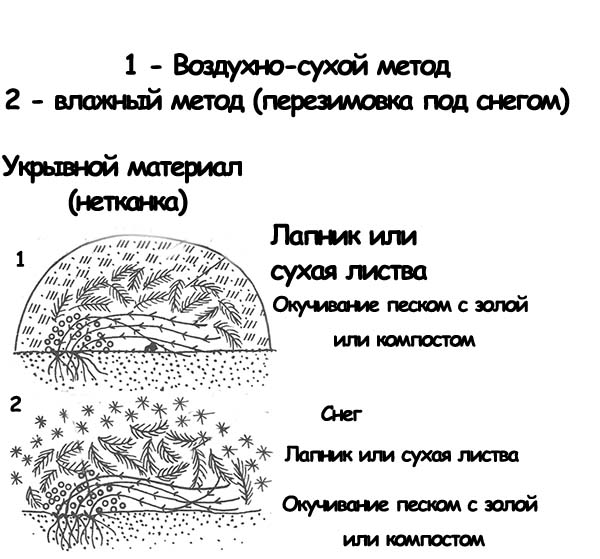
Basic rules for shelter
Observe the following guidelines for sheltering flowering and climbing shrubs to ensure that they overwinter well:
- The best hideout for clematis, as well as for any other non-frost-resistant plants, this is snow. Therefore, if you live in a private house, then you can simply throw snow from the paths with a mound.
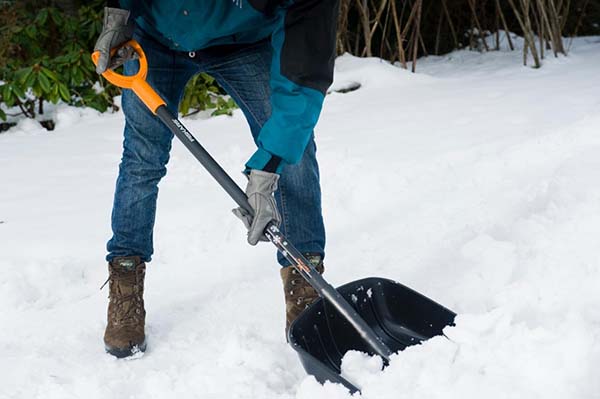
- That is why clematis needs to be removed from the supportrather than just sheltering on it.
- First of all, the winter shelter of clematis should protect its justfrom excess moisture (dampness), not from frost. As a rule, this flowering liana exactly vomits, and does not freeze out.
- Necessarily needed clear the trunk circle from the fallen sheets and other garbage, as well remove all leaves directly from a covered bush.
Important! It is actually not necessary to cover the clematis of the 3rd pruning group, except that you can put spruce branches or other branches on them, or spud.
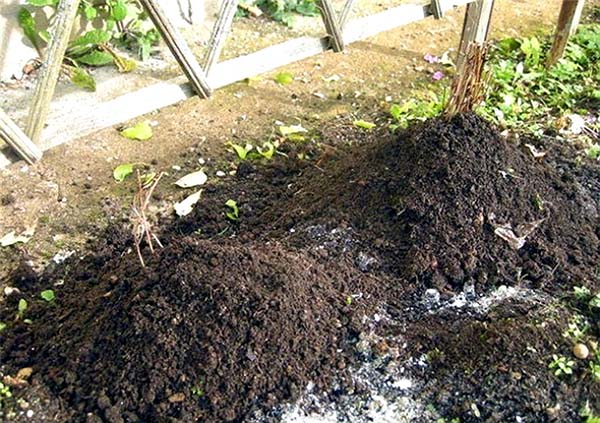
A step-by-step guide to cover
Step-by-step instructions for sheltering clematis for the winter:
Note! If you have very severe and / or snowless winters, then you should additionally spud the base of the bush (root collar), filling it 30-40 cm, for example, dry compost or ordinary garden soil, but it is better to use a mixture of river sand and wood ash.
Even if the upper part freezes, the lower part of the bush, the buds of which were underground, will surely remain and will grow in spring.
- 1. Before you cover, you first need to bend the faded vine to the ground.
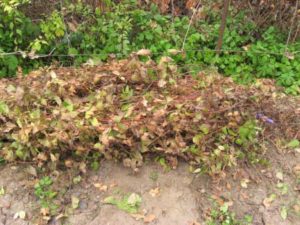
By the way! Many advise to lay 1-2 groups of clematis on the ground, twisting them in a ring, because it is much easier to cover this way. But it is better not to do this (or twist very carefully), because the stems of the plant are quite fragile and can break easily.
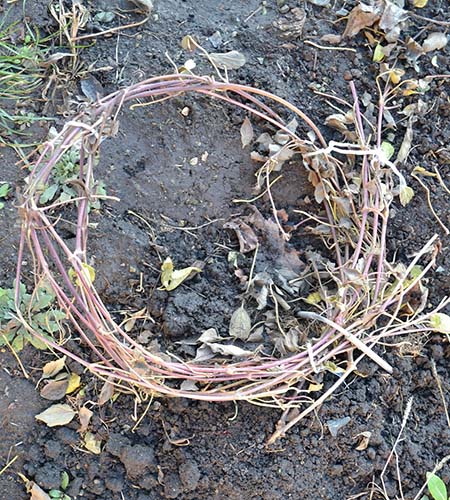
- 2. Next, you need to create an air cushion so that there is air under the shelter, for example, on top of clematis you can put branches of spruce branches or branches of some other decorative shrubs.
Advice! Fallen and broken branches of spruce branches can always be found in the forest, or you can ask neighbors who cut their spruces and pines.
- 3. Cover with a special covering material (for example, non-woven - spunbond or lutrasil in 1-2 layers).
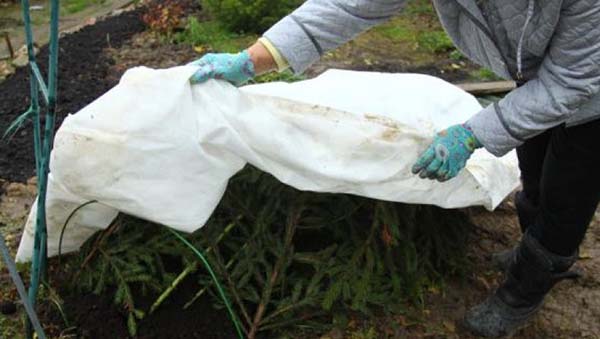
As a rule, the above design is quite enough, but if you are afraid that your clematis may suffer due to excessive humidity or excessive cold weather and temperature changes, then you can additionally:
- lay another layer of spruce branches or leaves on top (another air cushion);
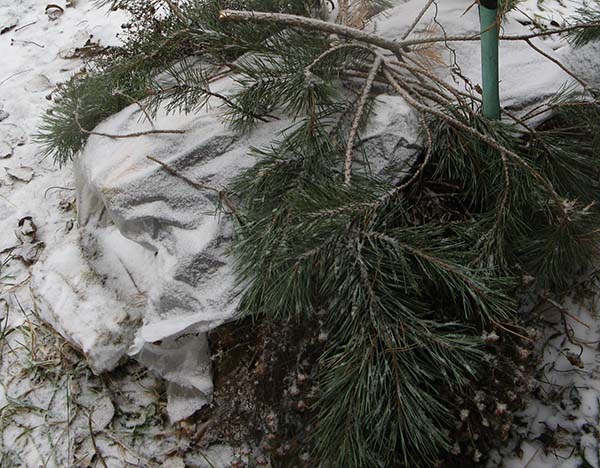
- make moisture insulation by putting slate or board (plywood) over the entire area of the shelter.
Can I cover with a film
A huge number of flower growers successfully cover clematis and other plants with a film, but no less number of summer residents believe that under the film the plant can simply mate.
However, it is worthwhile to understand that it is the film that prevents excess moisture from getting in in the fall, and after all, it is precisely from the moisture that the plants are vomited. Therefore, in spring, together with the onset of positive temperatures, the film is quickly removed.
Note! If you cover clematis from above with a film, then you must definitely leave air vents (holes) on both sides for airing.
A rather atypical shelter for clematis with a film can be done as follows:
- Lay the film under the clematis.
- Pour onto the film dry sawdust, foliage or grass.
- Lay the trimmed clematis on the sawdust, fix it with something, and then add the sawdust.
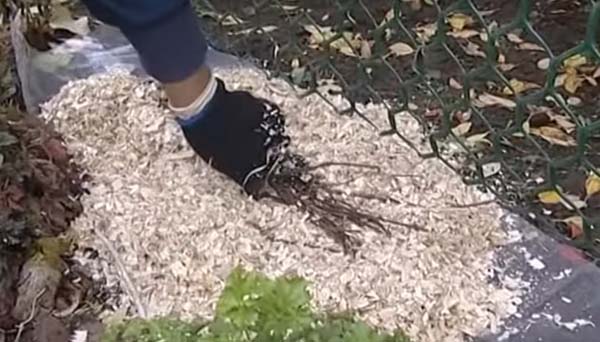
- Put a covering material on top (non-woven - spunbond, lutrasil).
- Secure with bricks.
- On top of the bricks, put a large board (plywood) over the entire area of the shelter or slate.
Due to the fact that a film is laid from below, the sawdust will not be able to dampen (soil moisture will not get), and from above, thanks to the board (slate), sedimentary moisture will not get inside the shelter.
Video: clematis shelter
To preserve thermophilic clematis in a harsh and little snowy winter, it is necessary to use a shelter. In order to use it correctly, you need to know the optimal terms of insulation, what to do before the shelter, when to remove it in a timely manner, which structures are most suitable for clematis. Having understood the peculiarities of this very important event, you will certainly be able to grow a surprisingly beautiful waterfall of these flowers.
It's worth remembering! If you covered your clematis, and they still do not bloom for the next year (for example, 1 or 2 groups of a pruning group), this does not mean that you have not insulated them enough. After all, flowering depends not only on wintering. The composition of the soil, watering, feeding are also extremely important.

